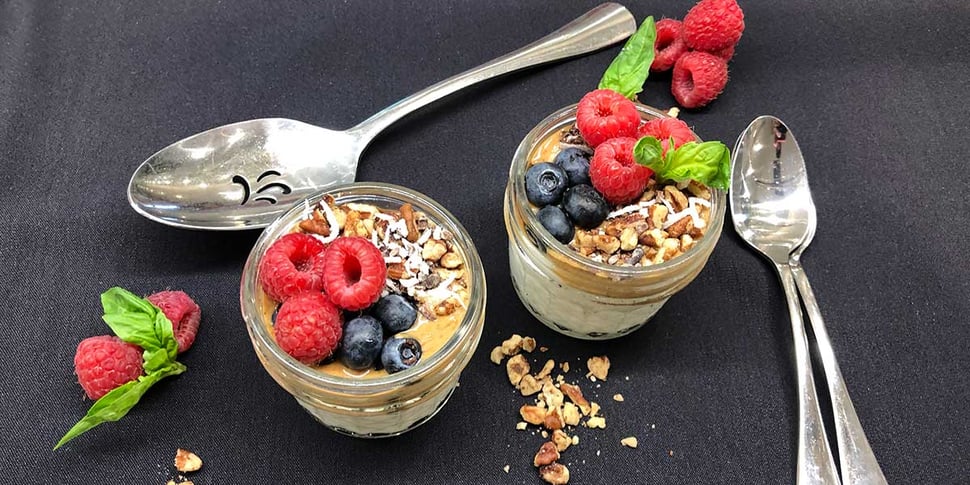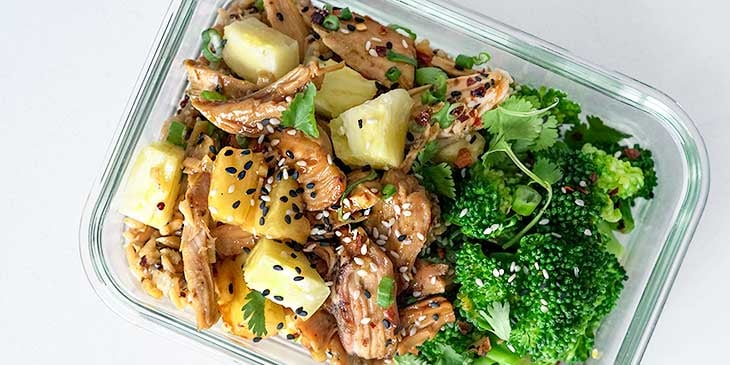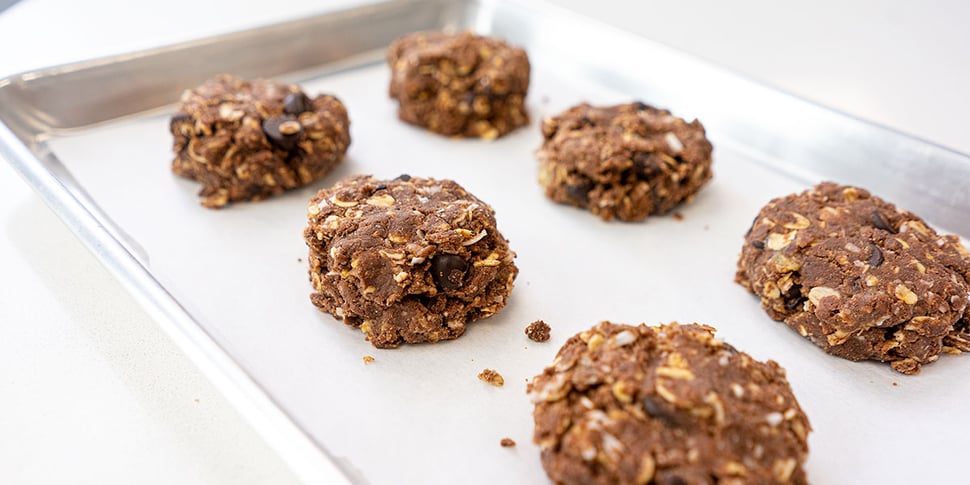This meal prep for beginners guide is the perfect place to start if you are wondering how to begin your meal prep journey or needing some fresh meal prep ideas. We will cover all the various ways you can meal prep as it is a powerful tool to help you improve your health, conquer your goals, and manage your nutrition and wellness.
What is Meal Prepping?
Maintaining a healthy diet and balancing our health can be challenging and intimidating, especially with busy schedules and the hustle and bustle of our daily lives. We are here to provide any and all the tools you need for stress-free, budget-friendly, and nutrient dense meals.
There isn't one specific way to meal prep, if you've ever cooked a meal and packaged off food for the next day then you my friend, have already started the process.
Meal prepping is the conscious and deliberate act of preparing ingredients or meals and portioning them out to create grab-and-go meals or quick cooking meals for later.
Spending a little more time tailoring your nutrition to your lifestyle is ultimately self-care and choosing to be more conscious about your diet is one way to show yourself some love while conquering your health goals.
In America in 2020 over 40% of adults are obese, 9% struggle with type 2 diabetes, and 40% battle with at least one chronic disease (1,2,3).
Modern medicine recognizes the critical impact lifestyle factors and proper nutrition have on the prevention, development, and management of disease and overall connection to our health and wellness (4).
Changes to your diet and lifestyle, big or small, can vastly improve your overall health and wellbeing, such as facilitating weight loss and blood sugar management (5).
That being said when it comes to assessing the health benefits of meal prep, it really depends on the person, their individual health goals, and the type of meal prep plan they want to follow.
Are There Any Cons?
There isn’t a downside when choosing to be more intentional and conscious about your diet and lifestyle.
The only obstacles to consider may be your budget and amount of the time you have.
How Much Should You Budget?
Cost effective food prep takes a bit of strategy and can feel overwhelming at first, but with a little practice you will get more efficient and better at fine-tuning your breakfast, lunch, and dinner menu to meet your fitness and wallet needs.
There are tons of great tips to make food on a budget including starting off by assessing what is already in your pantry and preparing sauces from scratch.
Some other budget friendly tips:
- Make a trip to your local farmers market to see what’s in season, you’ll get more bang for your buck purchasing high-volume foods like kale, collard greens, spinach. arugula, and other delicious vegetables.
- Start with a simple menu - fresh herbs and spices can transform one ingredient into.
- Learn how to portion your food to prevent food waste.
- Cross utilizing ingredients for multiple recipes.
How Much Time Do You Have?
30 minute recipes sound great, but all that cooking time really adds up!
You can easily save time by planning out your recipes before hand and choosing a specific day to prep.
Other simple time saving tips:
- Start small, package any leftovers from dinner
- Choose complete recipes that provide a protein, starch, and vegetable all in one
- Make more one-pot recipes
- Batch cook staple ingredients for your meals (like shredded chicken)
- Shop for pre-cooked or semi-prepped ingredients
In the restaurant business, we call this our ‘mise en place’. A term that translates to “put in place”, mise en place refers to gathering all your ingredients, equipment, make your grocery and prep list ahead of time.
How To Start Meal Prep in 7 Simple Steps
1. Know Your Motivation
Take a moment to think about why you want to start, continue or revamp your current diet.
How do you want to feel after 2 months, 4 months, and 6 months after implementing new rituals and habits into your diet and lifestyle?
Really ask yourself, "what is driving me to do this? What am I hoping to get out of it". And then write it down or take a picture of it, and post it somewhere that you have to see it every day - like in the mirror or the fridge.
Are you meal prepping to:
- Save time and money
- Gain weight and muscle
- Lose Weight
- Be more mindful with your diet
- Learn how to eat intuitively
Knowing your ‘why’ will help you create sustainable changes, achievable goals, and increase your willpower when it comes to being the best version of yourself.
2. Calculate Your Nutrition Needs
Even if you don't plan on calorie counting, logging your food, or counting your macros, having a basic understanding of how much you should be eating per day to fuel your body and what kinds of food you want to be eating will ultimately help your health and wellness.
Try this free calorie calculator to get your total daily energy expenditure (TDEE) in a few minutes:
Knowing your nutrient needs will help you:
- Determine how much you should be eating per meal period
- Identify how to tailor your diet to your health goals
- Make it easier to choose foods you love and plan ahead
Keep it simple, and use the Trifecta App to track your meals.
Figure out exactly how many calories you need to consume each day to meet your basic nutrient needs is one way to start building a meal plan to match your lifestyle.
3. Start Small and Plan Ahead
Whether you are starting a meal prep plan or looking for some new ideas don’t feel like you have to change everything at once.
Start by prepping for 1 meal for the week, like lunch, then add in breakfast and snacks once you get the hang of it.
For Example: Prepare this teriyaki chicken bowl recipe which will give you 4 servings to enjoy for lunch or dinner throughout the week.
Take a look at home much you want to budget as well. It is entirely possible to load up on quality, nutritious options each week without breaking the bank or losing your sanity.
Here are two quick tips to help determine your budget:
- Track your current spending habits: For example, if you are spending $40 a day on takeout lunches and gourmet coffee, that is a great place to start.
- Set your budget using your weekly salary: According to recent statistics, most Americans spend about 10% of their income on food. For example, if your household salary is $8,000 a month, your monthly food budget would be $800 or roughly $200 per week.
Pick what meals you want to prep for and determine your budget before diving into the specifics of your grocery lists.
4. Get The Right Containers and Organize Your Kitchen
Set yourself up for success by taking it a step further and organize your cookware and containers beforehand to get an idea of what you have to work with.
We all have had a cupboard full of odd-and-end containers whose lids seemed to have mysteriously disappeared. If you don't have the right storage containers before you start prepping, it's worth the money to invest in high-quality containers.
Here is our list of top kitchen tools to consider:
- 8-inch chef’s knife and cutting board
- Measuring cups & spoons
- Food scale & food-safe meal prep containers
- Non-stick skillet & baking sheets
- Food Processor
- Slow Cooker
This is also the time to shop your pantry before choosing your recipes or deciding on specific; take an inventory of what you already have to reduce food waste.
5. Plan Your Menu and Grocery List
There are a few different ways to prepare food ahead of time. Know which way you plan on cooking will help you create a menu and plan your grocery list.
- Complete Recipes: Full recipes are great if you're prepping for one meal period, or don't mind eating the same thing multiple days in a row. You'll prepare a recipe like Seared Salmon with Parmesan Kale Salad and portion it out containers for 3-4 meals.
- Batch Cook Ingredients in Bulk: This is similar to purchasing Trifecta A La Carte. Cook batches of your protein of choice, vegetables, carbohydrates, and choose a variety sauces and garnishes to build your meal plan for the week. Portion out each individual recipe for the week based on your nutrition needs and goals.
- Pre-Cut Ingredients: This type of preparation is simply pre-cutting fresh ingredients so you can cut down on the cooking time in the kitchen.
No matter which way you choose to approach your menu, plan on creating your grocery list before going to the store to shop. Make sure you eat before you go grocery shopping, we all tend to impulse by when shopping on an empty stomach.
If you are using complete recipes refer to the ingredient list, or build you grocery list by purchasing simple pantry staples:
- Legumes: Black beans, chickpeas, kidney beans, lentils
- Whole Grains: Quinoa, rice, oats, high-protein pasta, polenta, farro
- Canned Foods: Roasted red peppers, artichoke hearts, tuna, salmon, tomatoes, pre-made sauces
- Healthy Fats: Olive oil, avocado, coconut
- Nuts & Seeds: Almonds, pumpkin seeds, sunflower seeds, nut-butters
- Condiments: Teriyaki sauce, sweet n sour, balsamic vinaigrette, ranch
- Herbs & Spices: stock up your spice cabinet with a variety of flavors for easy meal prep flavor-boosters
Keep a folder digitally with your favorite recipes for a quick guide to planning your menu.
The Best Foods For Meal Prep
The best foods for you weekly meal plan are the ones you enjoy eating. Need some inspiration? These healthy food lists have a variety of ingredient ideas to prevent meal prep burnout:
- Best Foods For Weight Loss
- Best Foods For Muscle Gain
- Gluten-Free Foods
- High Fiber Foods
- Healthy Fats
- Foods That Help Lower Blood Pressure
- Auto-Immune Protocol Food List
- Keto Food List
- Vegan Food List and High-Protein Vegan Foods
- Antioxidant Foods
- Clean Eating Foods
- Diabetic Friendly Foods
- Low-Cholesterol Diet Foods
- Low-Soduim Diet Foods
6. Shop, Organize, and Make a Prep List
Now that you have your menu set and your grocery list made, all you have to do is pick a day to shop and then get prepping!
You don't have to do this on the same day either, you can totally shop, get organized and then plan on prepping the next day. This is 100% based on your schedule.
Create a prep list to save time by planning out what you need to cook, and start with the ingredients or recipes that take the longest. Save the simple things for last.
Just like you created a custom shopping list for your menu, take a moment to write down a 'prep list' and review any recipes you may be referencing.
7. Get Cooking
When your preparing food to be consumed later in the week, there are a few tricks you can do to help keep your food fresh and practice proper food safety in your kitchen at home and save time:
- Don't Prep For More than 3-5 Days: You'll have fresher meals and you can always freeze any leftovers.
- Cool Your Food Immediately After Cooking: Once you have cooked the food place it in an open-container and immediately cool it down in the fridge. Remember to leave the lid off until it is completely cooled down within two hours then securely wrap it or place the lid on.
- Par Cook Ingredients: If you plan on microwaving your food to reheat it, under cook some of your ingredients. For example, plan on including sautéed vegetables, cook them 1-2 minutes less that what you'd normally think. This goes for cooking pasta as well, cook it 'al-dente' or to the tooth.
- Storage Your Food At The Right Temperature: Make sure your fridge is set to 40 degrees Fahrenheit or lower from proper storage. Also store all your meal prep in air-tight meal prep containers to ensure freshness.
- Multi-Task: This is more of a general tip to help save time. Cook multiple ingredients at once like baking chicken and roasting vegetables.
How Long Does The Food Last?
Even with a cold fridge, proper containers, and food safety precautions, food doesn't last for ever. Most meal prep won't last longer than 5 days in the fridge.
Here are some basic guidelines for the shelf life of most pre-cooked food without freezing:
- Cooked Meats: 3-5 Days
- Cooked Fish: 2-3 Days
- Cooked Root Vegetables (carrots, beets, parsnips, sweet potatoes): 1 week
- Cooked Non-Starchy Vegetables (cauliflower, cabbage, tomatoes, broccoli etc.): 6 days
- Cooked Eggs: 3-4 days
How Should You Reheat Your Meals?
Microwaving is the go-to in terms of reheating pre-cooked food but can often lead to mushy and not so great flavor. The cooking time will vary based on what kind of food you are re-heating
You can also reheat your meals in the:
- Air Fryer: line the basket with foil to reheat full-meals without spilling any ingredients
- Saute Pan: always saute over medium-high heat
- Convection Oven: heat over 400 degrees every time
Simple Recipe Ideas to Try
Here is some inspiration and easy recipes to add into your routine.
7 Easy Breakfast Recipes to Make
Grab-n-go options for breakfast for the week that can be prepared in a few simple steps:
- Breakfast Parfait
- Overnight Oats Recipe
- Avocado Toast Recipe
- Protein Smoothie
- Breakfast Taco Recipe
- Breakfast Burrito Recipe
- High Protein French Toast
12 Healthy Lunch and Dinner Recipes for A Busy Week
Add variety into your meals by finding inspiration from different cuisines and using various sauces and seasonings.
Recipes we know you'll love:
- Pineapple Teriyaki Chicken Bowl
- 10 Minute Shrimp Tacos with Street Corn Slaw
- Asian Noodle Pad Thai Recipe
- Homemade Vegetarain Chili
- Protein Noodle Stir-Fry
- Easy Sweet and Sour Chicken Recipe
- Creamy Bacon & Spaghetti Squash Recipe
- Mongolian Beef Recipe
- Cashew Chicken Recipe
- Thai Turkey Stir-Fry Recipe
- Stuffed Sweet Potato Recipe
- Vegan Beyond Meat Tacos
Don't Forget The Sweets and Snacks
Let's be candid with each other, a well-balanced meal plan includes drinks, snacks, and something to satisfy your sweet tooth.
When you plan ahead don't forget to include whatever snacks, drinks, and sweets you would to include:
- 20 High Protein Snacks That Aren't Peanut Butter
- 25 Keto Friendly Snacks
- 5 Simple Paleo Snacks
- 40 Healthy Low Calorie Snacks
- 38 Low Carb Snacks under 10 grams of Net Carbs
- Protein Oatmeal Cookies
- Protein Chocolate Pudding
- Healthy Fudge Brownies
Looking To Meal Prep For a Specific Food Plan?
Use our RD created toolkits for various lifestyles to help you simplify the process of starting your meal plan, complete with food lists, grocery lists, and planning guides.
- Keto Meal Prep Toolkit
- Weight Loss Meal Prep Toolkit
- Weight Gain Meal Prep Toolkit
- Vegan Meal Prep Toolkit
- Vegetarian Meal Prep Toolkit
- Clean Eating Meal Prep Toolkit
- Paleo Meal Prep Toolkit
How About Trying Meal Prep Delivery?
You could also build healthy meals for as little as $6 a meal using pre-cooked and ready-to-eat ingredients. Yes, you heard that right... almost zero cooking required.
Trifecta's a la carte menu is a meal preppers dream - allowing you to plug and play with the exact proteins, carbs, and veggies you like to match your taste preferences and lifestyle. And the food is the highest quality possible:
- Organic ingredients
- Grass-fed and sustainably caught proteins
- Minimal seasonings (almost no oil or salt used)
- No added sugar
- No added preservatives or artificial ingredients
- Delivered Fresh
- Vacuumed sealed to last up to two weeks in your fridge
We do all the hard work and give you the tools you need to crush your meal prep - all while getting most of your time and money back, so you can spend it on what matters most to you.
Ready to hit the easy button on your meal prep routine?





